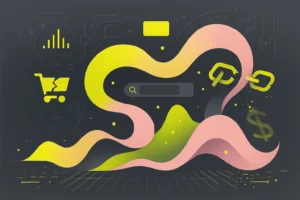Everyone’s watching the AI leaderboard – new models, bigger benchmarks, smarter chatbots. But step back for a second. While the spotlight bounces between flashy releases, Google has been quietly locking down every part of the generative AI stack: the models, the chips, the user base, and the data.
This isn’t about who launched first. It’s about who has the long-game advantage. And when you connect the dots from TPUs to Gemini to billions of daily search queries it’s pretty clear: Google isn’t just competing in the AI race. They’re building the track, owning the stadium, and collecting the ticket sales.
Let’s unpack what makes Google’s position so hard to beat, and why most challengers are still playing catch-up.
Google Isn’t Just Building Models. It’s Building the Stack
Most companies in AI are fighting over one piece of the pie. Some are focused on language models. Others on inference efficiency or open-source tooling. But Google? It owns the bakery.
From silicon to software, from research labs to billions of end-users, Google has constructed a vertically integrated ecosystem. Here’s what that looks like in practice:
- Custom chips: Google doesn’t rely on NVIDIA or AMD. It builds its own TPUs (currently Ironwood) to train and serve its models.
- Research pipeline: The same company that invented the Transformer architecture still pushes the bleeding edge via DeepMind.
- Model scale: Gemini 2.5 is already handling million-token contexts. That’s not just scale for scale’s sake. It opens the door to agents that can remember, plan, and reason in ways short-context models can’t.
- Open models: The Gemma 3 family brings Gemini-grade intelligence to smaller footprints. Devs get powerful models that run locally or on a single GPU.
- Distribution: Billions already interact with Google’s AI daily via Search, Gmail, YouTube, Android, and Maps. Gemini features don’t need a separate app download, they show up where users already live.
This kind of integration means Google doesn’t need to win each part of the stack individually. It just needs to keep improving the system. And the system is massive.
AI Overviews Changed the Game (Quietly)
If you’re focused on the LLM leaderboard, you probably missed this. Google embedded generative AI into Search with almost no fanfare. As for now, more than 50% of all search queries now return an AI Overview – a summary generated by Gemini that shows up before any organic links.
That shift has enormous implications:
- First exposure: For many users, this is their first regular contact with generative AI.
- Default experience: Unlike ChatGPT or Claude, you don’t have to opt in. It just happens.
- Feedback loop: Every interaction trains the model on real-world questions, behavior, and preferences.
Most importantly, AI Overviews aren’t limited to facts. They’re starting to summarize products, services, opinions, and even next steps. For businesses, this means visibility is no longer about blue links. It’s about being included in the answer itself.
And guess who controls the rules of that inclusion?
Google Has a Data Advantage No One Can Touch
Training a language model is impressive. But refining it with live, behavioral feedback? That’s what makes it useful. And this is where Google quietly pulls ahead of the pack.
While others are busy crawling static web pages, Google is plugged into the real-time rhythm of the internet. It’s not just collecting content – it’s observing how people interact with it.
Search Behavior at Planet Scale
Every day, billions of people ask Google questions. What they search, how they phrase it, what they click on, what they skip – all of that becomes part of the learning loop. Google doesn’t just know what’s being asked. It knows what’s being understood and what’s being ignored.
This kind of intent-rich data is gold for training systems that need to predict not just the next word, but the next action.
YouTube and the Power of Engagement Signals
YouTube isn’t just a video site – it’s one of the most complex behavioral datasets in the world. Gemini learns from what people watch, when they drop off, how they move from topic to topic, and even which thumbnails get attention. That feedback gives Google’s models a massive edge in understanding human attention, interest, and discovery.
Maps, Reviews, and the Local Layer
From location check-ins to restaurant reviews to traffic patterns, Google Maps adds another dimension: where people go and what they say about it. That’s behavioral data grounded in the physical world, something few AI companies have access to, and fewer know how to use.
Workspace Signals, Aggregated at Scale
Gmail and Google Docs might seem unrelated to training a model like Gemini, but they aren’t. Patterns in how people write emails, structure documents, and collaborate offer a deep look into natural language use across personal and professional contexts. Google doesn’t peek at your inbox – it looks at trends across millions of users (anonymized, of course) to build more helpful AI.
Android: The Silent Engine
With Android running on billions of devices, Google sees app usage patterns the moment they happen. It learns how people navigate interfaces, what notifications they engage with, how they multitask – a stream of subtle signals that feed into better predictive systems.
Other companies scrape the web. Google watches how the web is used. That’s a different level of insight. It means Gemini isn’t just well-trained, it’s behaviorally aligned. It learns not only what people ask, but how they ask it, what they ignore, and what they do next.
Speed Matters, and Google’s Hardware Keeps It Fast
Training large models is expensive. Serving them at scale is even harder. Most companies rely on third-party GPUs and cloud infrastructure. That means delays, costs, and bottlenecks.
Google bypasses all of that with its TPU v5p chips and what it calls the AI Hypercomputer – an infrastructure stack tuned specifically for generative workloads. That gives Google:
- Faster model training cycles.
- Cheaper inference at massive scale.
- The ability to roll out updates across billions of devices without breaking a sweat.
This isn’t just a tech flex. It means features like AI Overviews or Gmail’s smart replies can run smoothly across Android, Chrome, Workspace, and more.
Developers Get an Ecosystem, Not Just an API
Most LLM providers treat devs as customers. Google treats them as partners. Its open tooling, especially around Vertex AI and the Gemma models, makes it easy to build, fine-tune, and deploy without starting from scratch.
Highlights include:
- Native support for Keras 3, JAX, and PyTorch.
- Seamless scaling from laptop to TPU pod.
- Monthly releases of open models (Gemma 3, PaliGemma, ShieldGemma).
This isn’t charity. It’s a strategy. By enabling a wave of third-party builders, Google increases adoption, stress-tests its infrastructure, and seeds the market with Gemini-aligned applications.
Embodied AI Is Next, and Google’s Already There
While others are still catching up on language, Google is moving into the physical world. Gemini Robotics with a surprising level of competence can fold origami, pack boxes, and generate code on the fly to control robotic arms.
The implications here go way beyond research demos. With the same core models running everything from Gmail to warehouse robots, Google is building a unified reasoning engine. One brain, many bodies.
In a world heading toward AI-powered fulfillment, elder care, and field robotics, this matters.
Enterprise Traction Is Picking Up Fast
Despite AWS and Azure still leading in overall cloud revenue, Google Cloud is quickly closing the gap. It’s been growing at a faster pace than both competitors, showing strong momentum across the enterprise AI space.
Even more telling: over a quarter of CIOs now rank Google Cloud as their #1 AI infrastructure partner. That shift isn’t just about compute. It’s about the combination of:
- Proprietary hardware (TPUs).
- Integrated tooling (Vertex AI).
- Leading models (Gemini, Gemma).
The revenue flywheel here is real. More adoption funds more TPU R&D, which improves infrastructure, which attracts more users.
Where We at Nuoptima Fit into the New Search Landscape
At Nuoptima, we’ve been watching the shift toward AI-powered search closely and adapting in real time. Google’s pivot from traditional blue links to AI Overviews and conversational interfaces has reshaped how visibility works. It’s no longer about just ranking on page one. Now, it’s about being the answer. That’s where we come in.
We help brands stay discoverable in this new era of generative-first discovery. Our approach blends data-driven SEO, content built to resonate, and technical strategy that speaks Google’s language, literally. From international SEO to enterprise-scale link building, we make sure our clients are visible where it counts. AI might be rewriting the search results, but we’re making sure our partners still show up at the top.
Final Thought: Google Doesn’t Have to Be First, Just Inevitable
The generative AI race isn’t about who launched the first chatbot or who built the largest model. It’s about who can turn intelligence into products, products into habits, and habits into ecosystems.
Google already did that with Search, Android, Gmail, and YouTube. Now it’s doing it again with Gemini.
So while others fight for mindshare, Google is busy taking market share. Quietly, systematically, and at scale.
That’s not hype. That’s the game.
FAQ
1. Is Gemini really better than other AI models like GPT-4 or Claude?
“Better” depends on what you’re measuring. Gemini performs strongly in reasoning, context length, and integration across Google’s ecosystem. But what sets it apart isn’t just raw performance – it’s how deeply it’s woven into products billions already use. You’re not just chatting with Gemini, you’re seeing it shape search results, write emails, summarize docs, and more.
2. Why does Google’s data advantage matter so much?
Because it’s not just about volume, it’s about behavior. Google sees what people search, click, skip, watch, write, and even how they move through apps. That kind of signal-rich feedback helps train models that feel more intuitive. Other companies are still scraping static text. Google watches how people actually use the internet.
3. What’s the deal with AI Overviews? Should I care as a business owner?
Absolutely. If you depend on Google Search traffic, AI Overviews are the new front door. Your brand might still appear on the page, but if you’re not part of the AI-generated answer, you’re missing out on attention and clicks. It’s time to think beyond keywords and start optimizing for retrieval and relevance.
4. Does Google being ahead mean other companies can’t catch up?
Not necessarily, but the bar is high. Google owns the stack – chips, models, infrastructure, and distribution. That makes it incredibly hard to match their speed, scale, or integration. Others will stay competitive in niches, but Google’s position makes it the default choice for most users.
5. How should marketers adapt to this new AI-powered search world?
Start by rethinking content strategy. It’s no longer about stuffing in keywords or chasing backlinks blindly. Instead, focus on building content that answers real questions, reflects real behavior, and can be picked up by generative systems. Tools like schema markup, structured data, and even conversational phrasing all play a role now.



